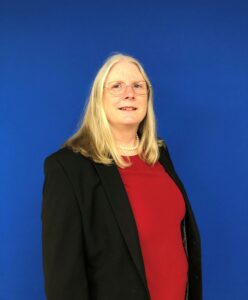
Looking back on 37 years of structural engineering service…
I sit here today reflecting on my structural engineering career and the industry changes that have happened since 1985.
1980’s
My first job out of college was at Whitacre Engineers in Tacoma, WA. There were no computers for the engineers to utilize. All work was done by hand on engineering paper. As a recent graduate, I had experience utilizing Strudel Engineering software, so for the first several months I drove to Bellevue, WA, every day to model a 5-story moment frame building utilizing the Boeing computer. It was an interesting project, but the analysis was very expensive for usage fees and storage on the computer, in addition to my time. After that job was completed, Whitacre Engineers decided to invest in their first computer for use by engineers. It was equipped with STAAD software. To design a 2D 3-member moment frame, the input would be made before leaving work for the evening. The computer would then be locked so the cleaning crew would not accidentally touch something overnight. The next morning, the result would be evaluated, and modifications (if needed) would be made starting the process over again. Comparatively, that frame utilizing current software takes nanoseconds to run.
1990’s
There were not many women engineers in the nineties. Typically, I wore a skirt and suit jacket to work each day. If I needed to go to a jobsite, I would wear slacks and leather close-toed shoes in addition to my hard hat, safety vest, etc. The first time I went to a job site with a new crew, there would often be catcalls which I ignored so they stopped happening. Talking with the job superintendents, I soon came to realize they had a lot of experience to share. By taking the time to listen to what they had to say before explaining to them why we have a requirement on the drawings that they need to follow was a way to gain respect. I also learned a lot about construction and how things fit together. Often early in my career, that initial lack of respect had as much to do with the fact that I was young and inexperienced as it did with the fact that I was a woman. Time changed, and with-it, offices started having casual Fridays. Currently, I generally wear jeans to work so I can go to a job site at a moment’s notice, although I will dress appropriately if I have a meeting that calls for more formal work attire. Jeans are much more durable and protect legs better for job site visits. One time, midway in my career, I wore slacks to a job site and a concrete tie was sticking out of a wall that tore my slacks and cut my leg. I do not think that would have happened or it would have been less severe if I were wearing jeans.
Career Development
One of the best things that I did early in my career was to get involved in the Structural Engineers Association of Washington (SEAW). My first boss was active in the organization and volunteered me to assist with a seminar that was happening in the area. I was able to meet people from other offices and received wonderful continuing education over the years. One of my favorite activities with SEAW was to attend the NW Conference, which is held annually, and the host chapter rotates between northwest regional chapters. I was able to network with many engineers and enjoyed viewing the trade show participants, as well as receiving the continuing education. When I moved to South Central Washington, there was no local chapter, so I along with four (4) other structural engineers and several professional engineers started the South-Central Chapter of SEAW. Through being a leader in this organization, I have been active in local, state, and national Structural Engineers Association (SEA) activities. I highly recommend getting involved with your local SEA chapter or the professional organization that represents the work that you do.
Some things that I have learned over the years:
• Computer outputs are only as good as the input you put into them. Know what to expect and how to tell if the output is correct. Spot check some parts by hand.
• Sometimes it is quicker and easier to calculate by hand one (1) page of calculations rather than computer with many pages of computer output. Computers do not save paper.
• Respect other people that you come in contact with. Listen carefully to what they have to say. You may learn something.
• Get involved. Local engagement with piers helps with both continuing education and provides a resource that you can call upon if you have questions when doing something that is a bit different than you have done before and gives a resource that you may use for peer review.
